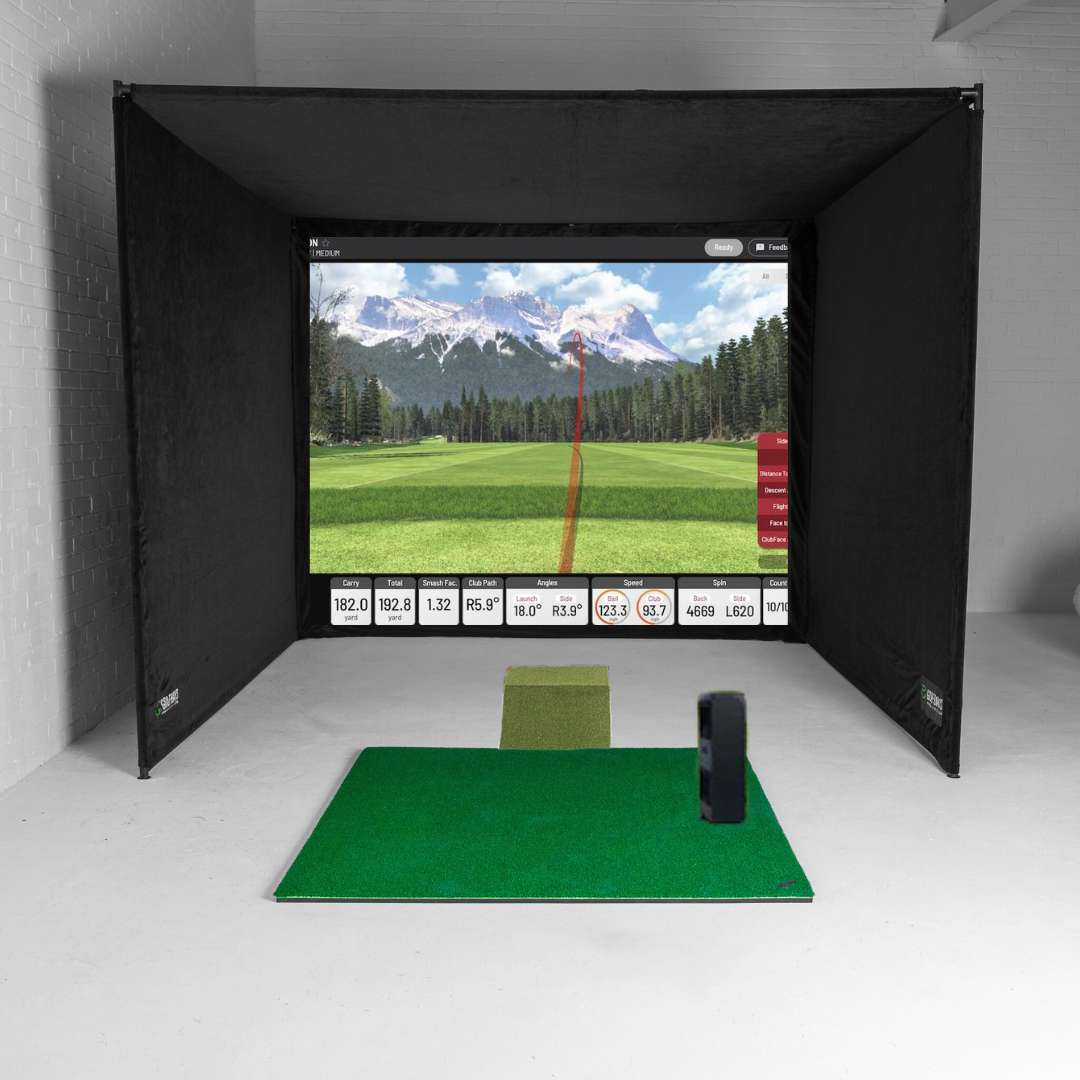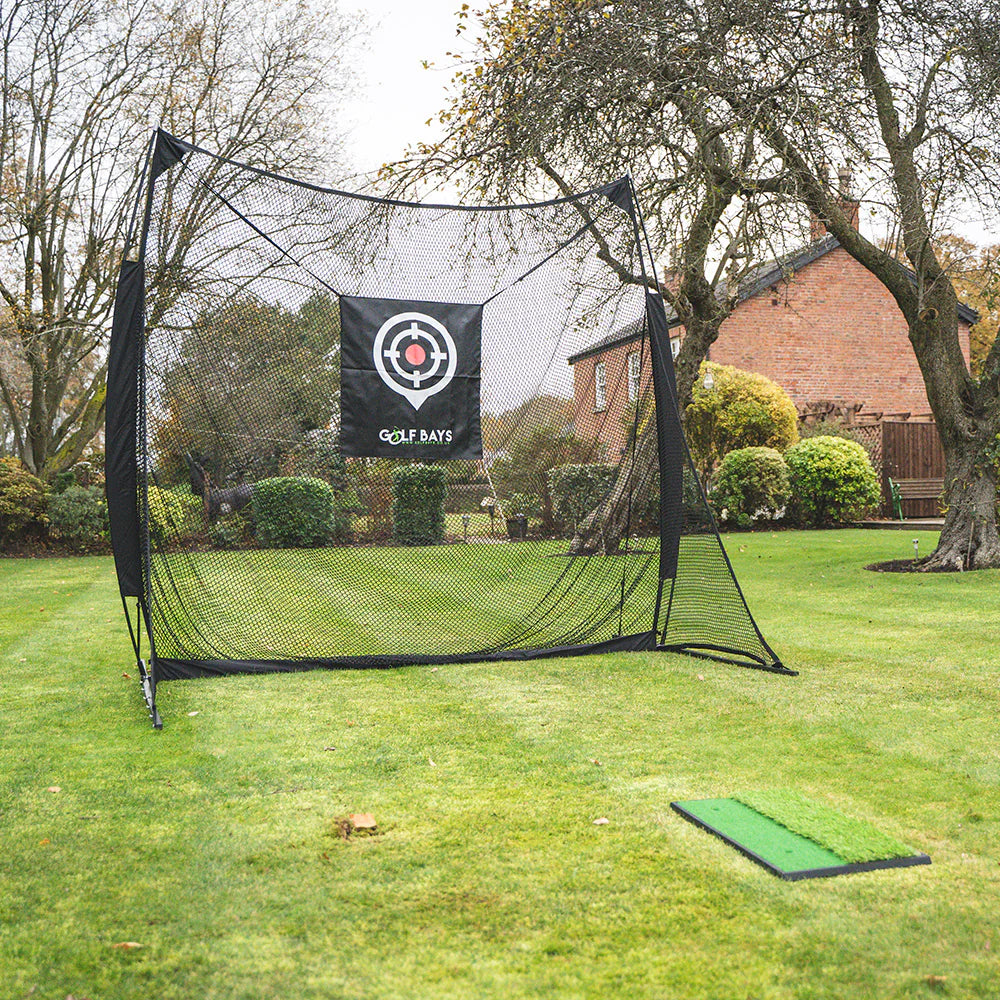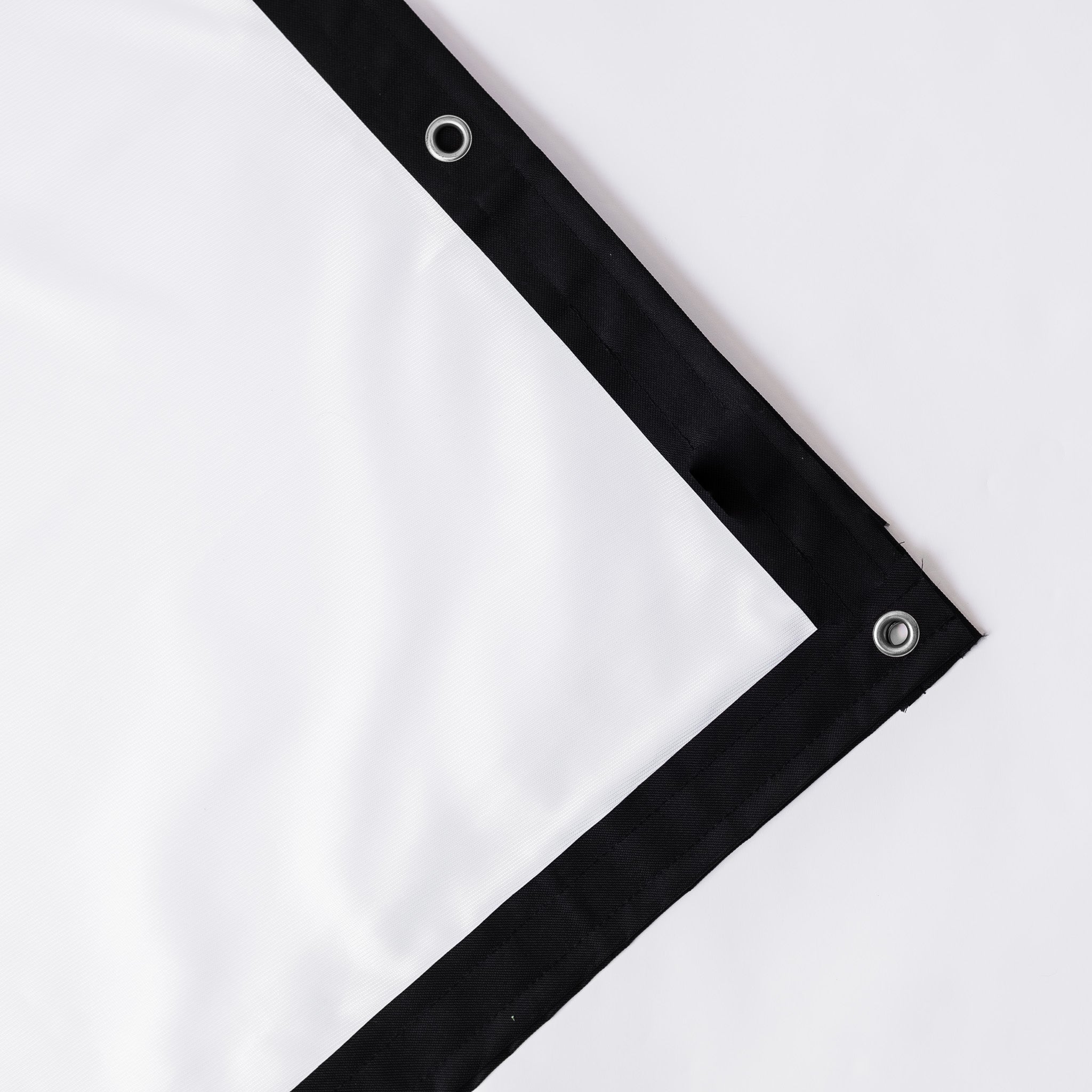In the world of indoor golf, the accuracy of golf simulators is a game-changer. It's the realism they bring, making them a notch above even outdoor courses, that's truly astounding. But how accurate are they really? That's the question we're about to delve into.
Accuracy in golf simulators hinges on the data they process. More data means less guesswork and consequently, more precision. It's a fascinating blend of technology and sport, where the finest systems merge multiple technologies, tracking both club and ball data.
Yet, even the best golf simulator isn't immune to outside influences that can affect its overall accuracy. And while technology can occasionally let us down, the silver lining is that we can usually diagnose these issues. Buckle up as we explore the intriguing world of golf simulators and their accuracy.
Golf Simulator Question: How Accurate and Realistic Are Indoor Golf Simulators?
In the world of indoor golf, the accuracy of a golf simulator is key.
Golf Simulation: Assessing Golf Accuracy
Accuracy affects the overall gaming experience and determines how closely the simulator mimics on-course play. For instance, simulators cannot replicate the feel of a 20mph side wind or the effect of an uneven lie. Also, it's hard simulating the experience of playing out of the rough. On the fairway, factors like temperature, humidity, and elevation can yield a variation of up to 30-40 yards with longer clubs.
1. Launch Monitor Technology
Simulator's core technology, the launch monitor, accurately measures club data on ball impact leading to realism. Some parameters it monitors include clubhead speed, launch angle, and spin rate. High-quality monitors provide accurate data, enhancing the realistic golfing experience.
Radar-based technologies may fail to accurately measure spin indoors and instead estimate it. This results in inaccuracies, especially with shots not made from the centerface of the club. Therefore, better simulators employ camera-based technology that actively tracks and captures the spin rate.
2. Full Swing, Ball Flight, and Launch Mechanics
The simulator's system should accurately capture the golfer's full swing mechanics and replicate the exact ball flight. Contemporary simulators employ high-speed cameras, infrared sensors, and motion capture technology to track these actions with precision. Quality and calibration of the monitor play a vital role. The more upgraded the simulator hardware and software, the more likely they mimic real-life golf play.
3. Club Fitting Parameters
Some simulators offer club fitting recommendations based on data collected during gameplay. These calculations are made after accurate data is obtained from the launch monitor and simulation software. Thus, reliable launch monitor metrics help players perfect their adjustment, form, and angle during tee times.
Unrealistic Golf Simulator? Here Are Possible Reasons Why


Golf simulator realism is of utmost importance when providing an indoor gaming experience that matches on-course play. Inaccurate golf simulator performance could be traced back to several factors, that contribute to a less than satisfactory virtual gameplay.
Poor Setup
An improperly configured golf simulator can detract significantly from the level of realism. Errors in launch monitor calibration, or incorrect projector settings, can distort the game experience. At worst, incorrect setup can lead to inconsistencies in the ball flight and distances, deviating from what the player may experience on an actual course.
Inaccurate Sensors
The reliability of a golf simulator leans heavily on the accuracy of its sensors. Sensors in poor working condition or not calibrated correctly can output inaccurate data, potentially resulting in a sub-optimal virtual golfing experience. One prominent manifestation of sensor inaccuracy is an unrealistic ball flight and swing analysis.
Poor Choice of Simulator
A mismatch between a simulator and the end-user's needs could lead to unsatisfactory results as well. The market offers a broad range of golf simulator models, each having unique features concerning accuracy, graphics, and other specifications. An ill-suited model for your specific practice requirements or playing style can hamper the realism of simulated play.
Inaccurate Tracking Systems
The effectiveness of tracking systems, such as launch monitors and motion sensors, carries significant weight in a simulator's realism. Fluctuating or imprecise tracking data can generate unrealistic ball flight trajectories and skew the swing analysis, compromising the overall accuracy of the virtual link.
Inconsistent Ball Physics
For the golfer, understanding ball physics, including spin, roll, and bounce, is critical for a realistic golfing experience, virtual or otherwise. If the simulator fails to model these physics accurately, it can lead to substantial discrepancies between the simulated and actual gameplay.
Room Setup and Space Limitations
The physical golfing environment influences the accuracy of golf simulators. That is, the lack of wind effects or a completely flat lie each round can make virtual play dissimilar to real-world conditions. Also, the inability to adjust the space as per the outdoor playing conditions contributes to this inaccuracy.
Inadequate Calibration
Inaccuracy in a golf simulator could additionally stem from an inadequately calibrated system. Simulators depend on a multitude of data calculated by your shot. If these metrics are captured by a poorly calibrated system, the resulting prediction can be unrealistic, leading to a significant decrease in simulator accuracy.
Golf Simulators vs. Real Golf

Feel of A Golf Simulator
A significant distinction between actual golf and golf simulation lies in the feel. It isn't about touching or haptic sensations. Instead, it's about the inexplicable sense of certitude and amusement that multipart elements like the fairway's tenor, the lie, and other environmental factors summon up when you're about to swing outdoors. Although top-notch projectors and screens like the Optoma HD Short Throw Golf Simulator Projector and SwingBay Golf Simulator Enclosure offer impressive graphics, replicating the real feel when striking indoors remains challenging.
Putting and Chipping On A Golf Simulator
Reduced depth perception can pose challenges for putting and chipping on golf simulators. Often, lauch monitor inaccuracies get blamed for these difficulties; however, the truth tends to be elsewhere. The challenge lies not in incorrect simulator readings, but rather in gauging the needed force when you're relying on virtual depth perception — akin to putting with limited depth perception, making it extremely hard to assess the distance and break of a putt.
Environmental Factors - You're playing in a dome
With virtual golf, external environmental elements cease to exert any influence on your swing. For example, a 20mph sidewise wind can drastically alter both your swing and your ball flight when playing in reality. However, similar conditions present no effect on your swing when you're into a round of virtual golf.
Lie Variability On A Golf Simulator
Understanding the lie variability and contour of your real-life golf course can influence your swing and gameplay fundamentally. Unfortunately, these ambient factors become hard to replicate within an indoor setting. Nonetheless, golf simulators are working diligently to mimic these experiences as closely as they can. High-quality projector and screen combinations play an instrumental role in enhancing the indoor experience.
Bunker Shots On A Simulator
Simulating bunker shots on a golf simulator can be problematic, where shots might cover a distance of either 5 yards or 50. Incorporating the unpredictability and complexity of real-life bunker shots into a simulator framework remains a daunting task, a problem yet to be solved.
Golf Simulator Advantages
So, how accurate are golf simulators? They're not perfect, but they're getting closer each year. With the right setup and calibration, they can offer a highly realistic approximation of the outdoor game. They're great for practicing your swing, improving your aim, and even playing a round when the weather's not on your side.
However, there are challenges. Putting, chipping, and bunker shots can be tricky to replicate, and the lack of environmental factors can make the experience feel less authentic. It's also worth noting that depth perception can be reduced in an indoor setting.
Remember, the key to a good golf simulator experience is choosing the right equipment, setting it up correctly, and calibrating it accurately. Despite the limitations, golf simulators are an excellent tool for honing your skills and keeping your game sharp, no matter the season.

































